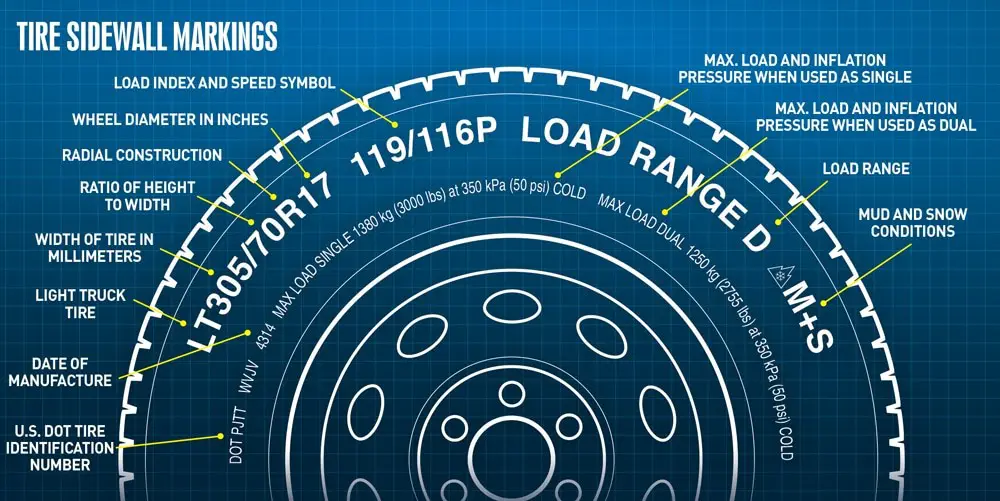The side of your tire, or the tire sidewall, has nearly everything you need to know about your tire. The information can be a little overwhelming at first, but it’s easy to understand if you break it into small pieces. Here’s a quick introduction to your tire sidewall.
Let’s start with an easy one. Looking at the diagram above, the first thing you’ll probably notice is your tire brand and model: Cooper® Cobra Radial G/T™.
Right underneath the brand and model names, you’ll see P225 60R 16 86T. This is a code that gives you a quick snapshot of your tire. It tells you:
To the left of the tire size code, you'll see DOT MA L9 ABCD 0309. It's your DOT Tire Identification Number, and it tells you essential safety and manufacturing information. DOT stands for the U.S. Department of Transportation, and these first three letters state that the tire meets their Federal Motor Vehicle Safety Standards (FMVSS). The remaining combination of letters and numbers are your TIN. These are codes state where the tire was made, tire size, week and year it was made. For more info, check out our DOT Numbers article.
To the left of the DOT Tire Identification Number, you'll see two more pieces of information. First, the tire's max carrying load capacity tells you the maximum weight your tire can handle. Second, the max cold inflation level indicates your tire's maximum inflation pressure in psi. However, we always advise that you follow the tire inflation pressure indicated in the vehicle owner’s manual or the placard on the driver’s side door jamb.
To the right of the tire size sequence, you’ll find information regarding the material used to build the interior of your tire. Essentially, the inside of a tire is made of different fabrics or plies, as well as steel belts. The number of plies in the tread and sidewall areas are an indication of the tire’s strength.
Essentially, the inside of a tire is made of different fabrics or plies, as well as steel belts. The number of plies in the tread and sidewall areas are an indication of the tire’s strength.
To the right of the plies and fabric info, you’ll see the tire’s UTQG rating. Created by the U.S. Department of Transportation, the UTQG rating is made up of a three-digit number and two letter groups. The UTQG compares the tire against a government standard test tire to determine these grades.
Tucked underneath the 116Q in the tire size sequence is the word "Tubeless." The tire must be marked either “tubeless” (tire does not use an inner tube) or “tube type” (tire requires an inner tube).
Coupled with the “max load” number, which is found near to “max press” on the sidewall, you can know the maximum load-carrying ability of a tire. Know this: It’s air pressure that allows the tire to carry a load. At one pound per square inch (psi) of air pressure a tire can support no weight. To increase its load-carrying capacity, air pressure must be increased. (Imagine a plastic soft-drink bottle: With the top off, it’s easily crushed, but new and unopened it can support a grown man.) However, at some pressure, adding more air to the tire will not provide increased weight-carrying capacity: That’s what the “max load/max pressure” means.
Know this: It’s air pressure that allows the tire to carry a load. At one pound per square inch (psi) of air pressure a tire can support no weight. To increase its load-carrying capacity, air pressure must be increased. (Imagine a plastic soft-drink bottle: With the top off, it’s easily crushed, but new and unopened it can support a grown man.) However, at some pressure, adding more air to the tire will not provide increased weight-carrying capacity: That’s what the “max load/max pressure” means.
Molded into every tire sidewall is a series of codes that give valuable information to the consumer regarding that
specific tire, such as name of the tire, its size, whether it is tubeless or its tube type, the tire grade, speed rating, the maximum load, maximum inflation, important safety warnings, etc. Let’s look at a typical passenger car tire to see what those letters and number really mean:
Example: P255/60R15 102T
“P” means this is a passenger car tire (as opposed to a tire made for a truck or other vehicle). P-metric is the U.S. version of a metric tire-sizing system. LT designates the tire as a light truck (or SUV) tire.
P-metric is the U.S. version of a metric tire-sizing system. LT designates the tire as a light truck (or SUV) tire.
“255” Section Width: The width of the tire in millimeters from sidewall to sidewall. This measurement varies depending on the width of the rim to which the tire is fitted: larger on a wider rim, smaller on a narrow rim. The number on the side of tire indicates the width measured with the tire fitted to the tire manufacturers recommended rim width.
“60” Aspect Ratio: The ratio of height to width (this tire’s height is 60 percent of its width).
“R” Construction: How the plies are constructed in the tire carcass. “R” means radial. “B” in place of the “R” means the tire is belted bias construction. “D” in place of the “R” means diagonal bias construction. The vast majority of modern cars, SUVs, and trucks use radial tires.
“15” Rim Diameter: The diameter of the steel or aluminum wheel in inches the tire will fit.
“102” Load Index: This tire has an industry-standard maximum load of 1,874 lbs. Different numbers correspond to different maximum loads. The maximum load is shown in lbs. (pounds) and in kg (kilograms), and maximum pressure in PSI (pounds per square inch) and in kPa (kilopascals).
“T” Speed Rating: This tire has an industry-standard maximum service speed of 118 mph. Tires using an older European system carry the speed rating in the size description: 255/60HR15. Different letters correspond to different maximum service speeds.
Want to know more about how to care for your car properly? Learn more about your car by reading our posts!
Northern Nevada Southern Nevada
Reno (775) 322-8100
Mon – Fri
7:30am – 5:00pm
Carson City (775) 882-8888
Mon – Fri
7:00am – 5:00pm
Gardnerville (775) 782-2605
Mon – Fri
7:30am – 5:00pm
Fallon (775) 423-5455
Mon – Fri
7:30am – 5:00pm
South Lake Tahoe (530) 544-9940
Mon – Fri
7:30am – 5:00pm
Store #59 – North Las Vegas (702) 648-3000
Mon – Fri
Coming Soon
Store #263 – Las Vegas (702) 242-1018
Mon – Fri
Coming Soon
Store #300 – North Las Vegas (702) 735-9914
Mon – Fri
Coming Soon
Store #600 – Las Vegas (702) 433-3000
Mon – Fri
Coming Soon
Store #700 – Las Vegas (702) 243-3600
Mon – Fri
Coming Soon
Store #1000 – Las Vegas (702) 818-7100
Mon – Fri
Coming Soon
Store #1800 – Las Vegas (702) 877-5432
Mon – Fri
Coming Soon
Store #4000 – Las Vegas (702) 272-1558
Mon – Fri
Coming Soon
Northern
Nevada Southern
Nevada
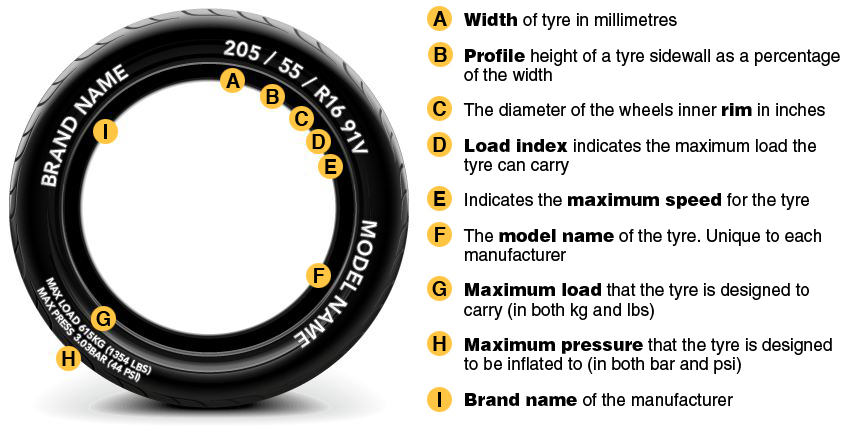 When to measure and how to inflate
When to measure and how to inflate Tire pressure significantly affects driving parameters: comfort, car handling, economy and safety. It is important to maintain the pressure recommended by the manufacturer and check it regularly. Let's figure out how to do it right.
When driving on asphalt, incorrect tire pressure (both high and low) leads to a decrease in the contact patch with the road. An overinflated wheel clings to the surface only in the central part, which leads to its rapid wear. A poorly inflated tire, on the contrary, "sits" on the sidewalls, leaning on the shoulder areas of the tread and pushing the central part inward. Here's what it looks like:
Both under-inflation and over-inflation in tires create many problems for the driver.
1. Increased wear of the central part of the tire tread.
2. Reduced ride comfort, hardness of potholes and road bumps.
3. Increased load on the car's suspension due to reduced tire damping effect.
4. Risk of tire damage and herniation due to shock loading (getting into a pit or pothole).
5. Reduced control stability due to reduced contact patch.
1. Increased wear of the tread sidewalls (shoulder areas).
2. Severe deformation of the rubber when driving over bumps, which increases the risk of tire damage.
3. An increase in tire temperature, which threatens to delamination of the carcass and can lead to tire explosion at high speed.
4. Increased risk of hydroplaning on wet roads.
5. Risk of tire breaking.
6. Increased fuel consumption.
Reduced pressure hits the driver's pocket hard: a pressure drop of 20% (which is not uncommon: it is enough, for example, to deflate the wheels to 1.8 atmospheres instead of the manufacturer's prescribed 2.2) reduces tire life by 25-30% and increases fuel consumption fuel by 3%.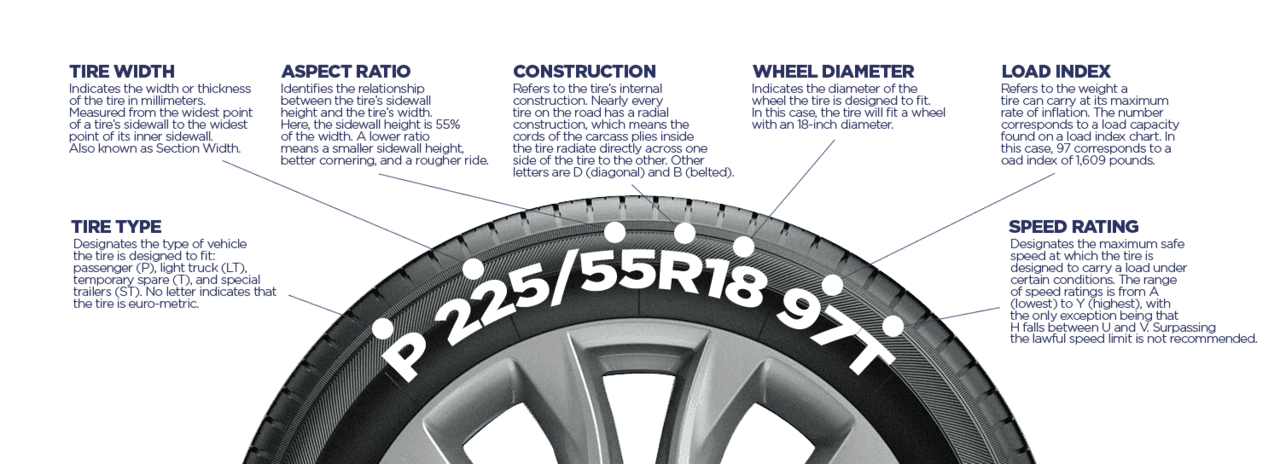
There is no universal tire pressure: it depends on the size of the tires, the characteristics of the car (primarily weight) and road conditions. Therefore, it is important to follow the factory recommendations, maintaining exactly the tire pressure that the engineers expected when designing the car.
The recommended pressure for your machine can be found in the operating instructions and on the sticker in the door frame. If, depending on the configuration, tires of several dimensions were installed on the car, then the pressure recommended for them may differ - look in the table for your exact wheel size. The manufacturer may prescribe an increase in tire pressure at the maximum load of the machine. For the spare tire (Spare tire), the required pressure is also indicated on a separate line - note that it is much higher than the standard one.
So, you have found the necessary pressure parameters, it remains to decipher them.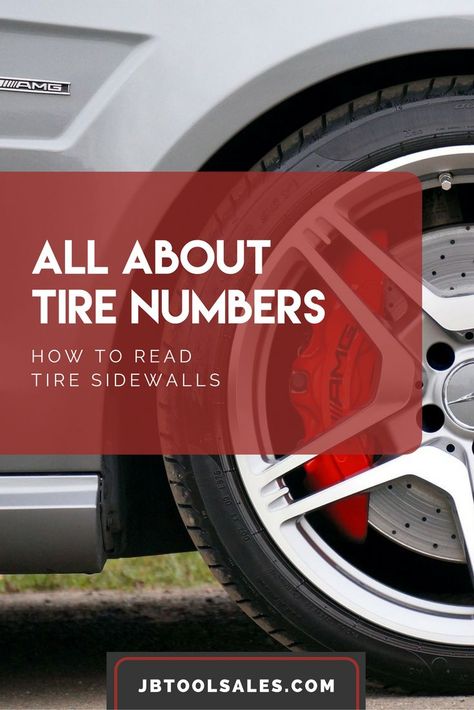 In physics, pressure is measured in pascals, in real life - in anything: in bars, atmospheres, pounds-force, kilogram-force ... Drivers and tire workers usually use the term atmosphere, but such a unit is often absent on pressure gauges (pressure measuring devices) . Let's clear up this confusion.
In physics, pressure is measured in pascals, in real life - in anything: in bars, atmospheres, pounds-force, kilogram-force ... Drivers and tire workers usually use the term atmosphere, but such a unit is often absent on pressure gauges (pressure measuring devices) . Let's clear up this confusion.
Atmosphere is a non-systemic unit of measurement, approximately equal to atmospheric pressure on the surface of the Earth. Since it has become widely used, it was necessary to somehow equate it with correct physical units. For simplicity, one atmosphere is considered equal to one bar, one kilogram-force and one hundred kilopascals.
In addition to the technical atmosphere (at), there is also the physical atmosphere (atm), which is slightly larger. Again, for convenience, they are considered equal. But all these assumptions introduce an error, so if you need accurate tire pressure, measure it correctly - in pascals or bars. Moreover, manufacturers usually indicate the pressure in these quantities.
Imperial pounds-force (aka PSI, “psy”), popular in the USA, is more difficult to translate, here you can’t do without a calculator. In the table, we have collected together all pressure units with exact values, and also approximately brought them to each other to simplify calculations:
| Pressure units | |||||
| Pascal | Bar | Technical atmosphere | Physical atmosphere | PSI | |
| 1 Pa | 1 N/m² | 10-5 | 10. | 9.8692•10-6 | 145.04•10-6 |
| 1 bar | 105 | 1x106 dynes/cm² | 1.0197 | 0.98692 | 14.504 |
| 1 at | 98066.5 | 0.980665 | 1 kgf/cm² | 0.96784 | 14.223 |
| 1 bar | 101325 | 1.01325 | 1.033 | 1 bar | 14. |
| 1psi | 6894.76 | 68.948•10-3 | 70.307•10-3 | 68.046•10-3 | 1lbf/in² |
It is advisable to check tire pressure daily, before driving. But this is only possible with a very measured rhythm of life. In reality, checking at least once a month is already an excellent indicator for the average driver. But before traveling a long distance, checking the pressure and visual inspection of tires and rims should be done in any case.
It is necessary to measure the pressure in cold tires, that is, before driving. During driving, the tires heat up, which increases the pressure by about 10%. Therefore, never release supposedly excess air from hot tires: after cooling, the pressure will be below normal. If you had to inflate a hot tire during a trip, inflate it 10% more than the nominal value, and check the pressure again when the wheels have cooled down - no earlier than 3 hours after stopping.
If you had to inflate a hot tire during a trip, inflate it 10% more than the nominal value, and check the pressure again when the wheels have cooled down - no earlier than 3 hours after stopping.
Always check the pressure in all tires. Different tire pressures seriously affect handling and can cause the car to pull to the side. Do not forget about the "spare tire": it should always be inflated in case of an unexpected wheel change on the road.
For long-term driving at high speeds (more than 160 km/h), car manufacturers advise increasing tire pressure by 0.2-0.4 bar from the recommended value. This will slightly improve the handling of the car, although it will negatively affect comfort. But such advice is relevant for driving on high-speed autobahns, and not for everyday urban use, especially in Russia.
Before a long trip on a dirt road or a road with a muddy surface (mud, snow), it is reasonable, on the contrary, to reduce the pressure in the tires - this will improve the grip. In summer, it is worth limiting yourself to reducing pressure by 5-10% of the nominal value, and in winter - by 10-15%.
In summer, it is worth limiting yourself to reducing pressure by 5-10% of the nominal value, and in winter - by 10-15%.
The pressure in low-profile tires (especially non-standard sizes) must be monitored especially carefully. Low profile tires have two features: a low sidewall (profile) height and a large rim diameter. If the tire has the correct air pressure, only the tread is in contact with the road. Low pressure causes the sidewall of the tire to bend, causing it to touch the roadway and wear out quickly, up to complete abrasion. And punching a low-profile tire in a pit at low pressure is much easier.
When inflating low profile tires, you need to focus on the pressure indicated for a full load of the machine and the maximum allowable pressure for a particular tire. It is indicated on the sidewall, next to the inscription max pressure, in one of the accepted units of measurement: kilopascals (KPA), bars (BAR) or pounds-force (PSI).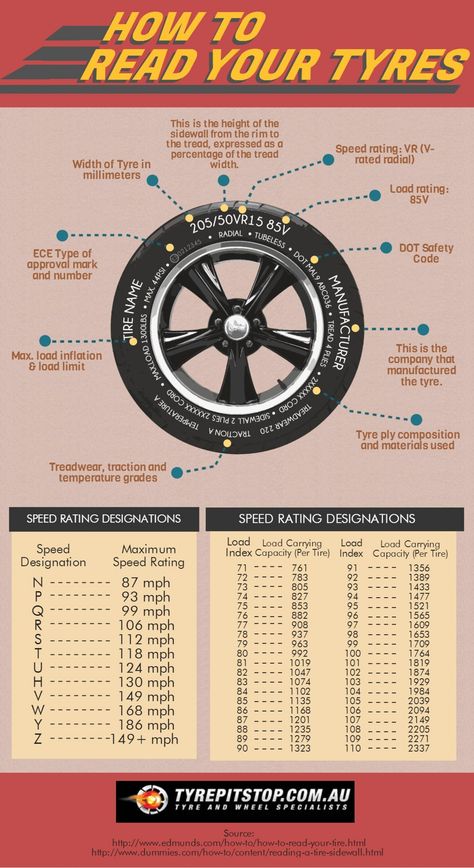
Modern cars equipped with sensors in tires and a TPMS (Tire pressure monitoring system) pressure monitoring system themselves monitor the pressure in each wheel and signal deviations, which is very convenient. If there is no such system in the car from the factory, you can install it yourself.
But the old manual measurement methods are still in use. Firstly, any modern car compressor is equipped with a pressure gauge: by inflating the wheel, you immediately control the pressure.
Secondly, there are compact hand-held pressure gauges: no need to unpack and connect the pump to check the pressure, and the measurement accuracy of such a pressure gauge is usually higher than that of a built-in compressor instrument. There are also modern digital pressure gauges on sale that allow you to switch pressure units on the fly and save readings in memory, which is very convenient.
Finally, if you want to entrust all maintenance of the car to professionals, you can use the services of tire fitting. In Hyperauto car services equipped with tire fitting areas, experienced mechanics will accurately measure and correct tire pressure, assess the condition of the tire tread and perform any other work with the wheels.
In Hyperauto car services equipped with tire fitting areas, experienced mechanics will accurately measure and correct tire pressure, assess the condition of the tire tread and perform any other work with the wheels.
Vladimir Gavrilov
Estimated reading time: 3 minutes
1993
Category: Auto Service
The design of modern tires has changed. They have strong sidewalls designed to maintain stability during maneuvering. If pressure begins to drop in such wheels, then they do not deform too much, and it is almost impossible to determine “by eye” when pumping is required. A pressure gauge usually comes to the rescue, but what if it is not at hand?
Many vehicles now have electronic systems that detect tire pressure differences using ABS.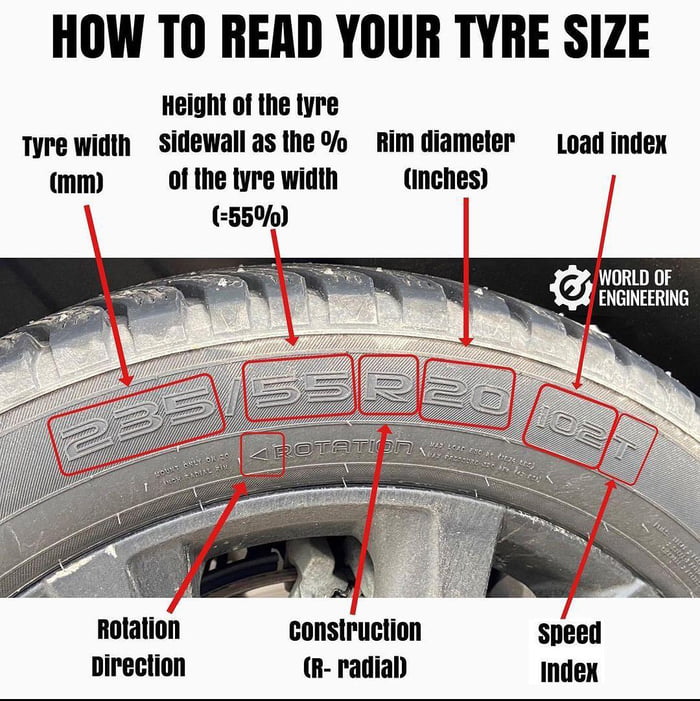 They work according to indirect data based on electromagnetic sensors in the hubs and register a pressure drop of about 1 atm. If the pressure in one of the wheels has decreased, then it sags, which means that due to the reduction in diameter, its rotation speed increases. Sensors pick up the difference in rotational speed and the electronic unit issues a warning in the form of a yellow lamp. Next, the driver is required to find which of the four tires has a puncture.
They work according to indirect data based on electromagnetic sensors in the hubs and register a pressure drop of about 1 atm. If the pressure in one of the wheels has decreased, then it sags, which means that due to the reduction in diameter, its rotation speed increases. Sensors pick up the difference in rotational speed and the electronic unit issues a warning in the form of a yellow lamp. Next, the driver is required to find which of the four tires has a puncture.
This can be done by tapping.
The stiffness of the sidewall and the sound of the impact will tell you which wheel needs pumping. It is necessary to beat with a fist in a glove with the application of force. Usually, when hitting an inflated tire, the hand feels a strong elastic response, as if hitting a wooden table.
However, if the pressure in the tire is less than one and a half atmospheres, then the blow becomes deaf and soft, and the rubber springs more actively. The sidewall flexes, and the driver can feel its compliance. The pressure difference between the four wheels is best recognized by blows.
The sidewall flexes, and the driver can feel its compliance. The pressure difference between the four wheels is best recognized by blows.
When hitting, listen to the sound as well. If all tires ring the same, then you can go. But if at least one tire makes a dull sound on impact, then you should pay more attention to it.
Insufficient tire pressure affects the vehicle's coast. Any driver knows how far their car can roll at neutral speed. If the vehicle slows down more than usual on familiar straights, then it is possible that one or more wheels are not inflated as they should be.
Normally, a reduced coastdown is accompanied by a slight side pull of the machine, especially when one of the front wheels is flat. The car squats on a flat tire and forces the suspension to steer a bit.
As soon as the driver experiences this effect, it's time to look for the nearest gas station with a tire inflation system. In extreme cases, in a store at a gas station, you can buy a portable compressor along with a pressure gauge and inflate tires.
According to the standards, the pressure difference in tires can vary within 0.2-0.3 atm., But not higher. With a puncture from a nail overnight, the pressure drops by about 0.8 atm. and more, which is fraught with a decrease in controllability. Tire sag in this case is already noticeable, but not every driver can feel the difference, especially when the car is parked in the snow.
If you set off on an uninflated tire, a number of troubles can occur. The driver can drive on a damaged tire for a long time until the pressure in the wheel reaches 1.0 atm. Then the car will pull to the side. However, many drivers mistake this for the effect of the natural slope of the road and continue driving. In this case, the tire experiences increased loads for a long time, fuel consumption increases and tread wear increases. The rubber is abraded along the edges of the contact patch. The critical pressure is 0.5 atm. With it, the tire can be torn off the rim during braking.